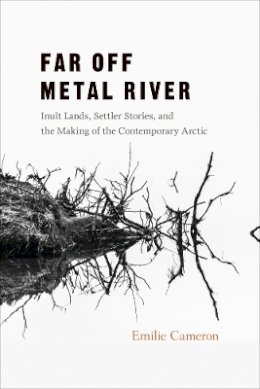
Far Off Metal River: Inuit Lands, Settler Stories, and the Making of the Contemporary Arctic
Emilie Cameron
Far Off Metal River examines how explorer Samuel Hearne’s account of the alleged 1771 “Bloody Falls massacre” in the Central Arctic has shaped ongoing colonization and economic exploitation of the North.
As Emilie Cameron demonstrates, the Arctic has for centuries been treated like a blank page onto which a long line of explorers, missionaries, anthropologists, resource companies, and politicians have inscribed stories that serve their own interests. These stories have played a central role in shaping the region, including efforts to open the North to industrial resource extraction. Consequently, Qablunaat (non-Inuit, non-Indigenous people) have a responsibility to question their relationships with the North and northerners, first by placing these stories within their proper historical, geographical, and social context, and then by developing new understandings and new relationships that reflect the actual political, cultural, economic, environmental, and social landscapes of the contemporary Arctic.landscapes of the contemporary Arctic.
Product Details
About Emilie Cameron
Reviews for Far Off Metal River: Inuit Lands, Settler Stories, and the Making of the Contemporary Arctic
J.S. Krysiek
Choice
Cameron’s Far Off Metal River is a masterful and carefully written book that addresses pressing theoretical and methodological questions for postcolonial studies, nature-society relations, and Indigenous geographies … It is a timely example of a non-Indigenous researcher centering the agency of Indigenous peoples in both research practice and writing … [This book] is a particularly important resource for students who are learning to engage with Indigenous epistemologies, ontologies, and methodologies in both the field and in the classroom … But it would be a mistake to read Far Off Metal River as valuable to researchers of Indigenous communities and histories alone … it has much to teach us about research in general.
Kelsey Johnson, Department of Geography, University of British Columbia
Society + Space
